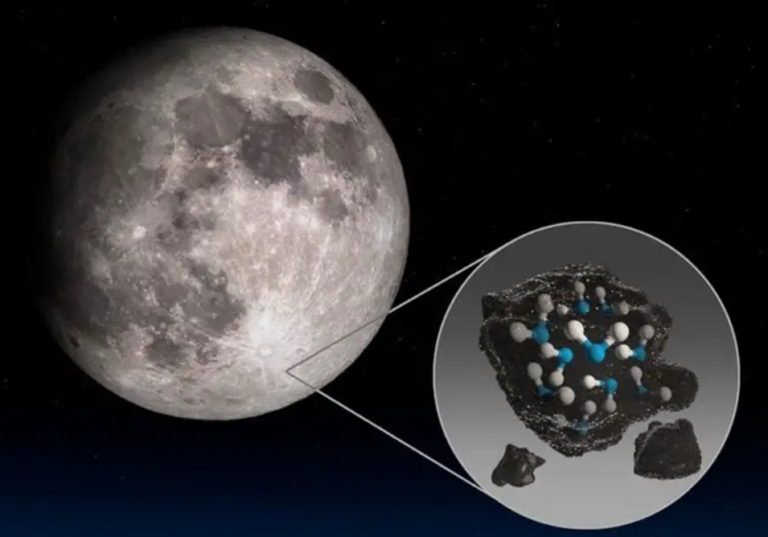Moon glass beads may hold up to 300 billion tons of water, providing a potential resource for astronauts in space.
Moon has about 300 billion tons of water in glass beads on its surface Moon structures that I found in photographs taken by the Orbiters could store 300 billion tons of water that we could get in space when people go on space missions to the Moon, asserted a team of 28 experts. Below, the findings from previous studies conducted in the recent decades show that water exists on moon.
According to the study released in the journal Nature Geoscience, this is something that may well be possible and this section seeks to enlighten how such water can be detected and recovered by humans. A team of specialists that included over a hundred members from Chinese universities and the Chinese Academy of Science examined 150 pieces of minute glass beads below a millimeter in diameter that were brought back to earth. , the innovation was also accredited to two researchers affiliated to institutions in the United Kingdom. They were found in the soil samples collected through Chang’e-5, a lunar mission landed on China.
The process of extracting water from these glass particles was not complicated. One of the team’s researchers named Mahesh Anand stated that if they were only boiled at 212 degrees Fahrenheit or more, that would be enough. “This will unlock possibilities that each of us has been considering.
”The Guardian quotes Anand, a professor of planetary science and exploration at the Open University, to say that the key is that if you can get some water, get it into a significantly more concentrated state if you can, then it’s really up to you how you want to use that water. The scientists added that water was made by solar wind – a slow stream of particles that containing hydrogen, a component of water, depositing it on moon surface.
In this area, hydrogen is combined with oxygen which is present in lunar rock to produce water and this water is stored within the beads.
As per the findings of the study, this procedure enables the beads get replenished with water as the solar winds keep on blowing in the moon. As seen in the study, these glass beads form when small meteorites crash into the moon and mix with a nearby material before melting. It is important here to note that all the particles studied by the scientists were atomic particles that contained less than 0.
A laboratory researcher from the Chinese Academy of Sciences involved in the study, Sen Hu said in an email to Insider. Nevertheless, while these beads constitute only 3 to 5 percent of the lunar soil collected, it is possible that they contain up to 297 billion tons of water.
Hu explained after getting water from the glass beads, it has potential to be used in future lunar missions. When speaking with CNN, Hejiu Hui of Nanjing University, one of the researchers on the study, said these new findings are a step closer to finding resources that might one day be used for drinking water, or rocket fuel. “This is one of the most exciting discoveries we’ve ever made,” Mohawk’s Anand said to the Guardian.
“So, with this discovery, the possibility of roving around the moon in a sustainable way is greater than it has ever been. ”This is as the European Space Agency looks at the possibility of having a permanent base on the moon. One such concept is a “Moon village” similar to ISS, crewed and available for the member governments.
NASA also plans to bring people back to the Moon in 2025 after half a century of people’s activities on the Moon. China also aims to put its own astronaut on the moon and plans to complete the mission by 2030.
Do not forget to share your opinion with us to provide you with the best posts !




0 Comments